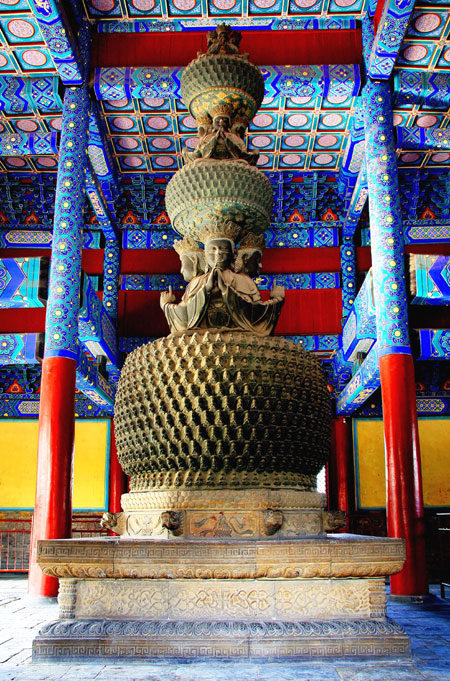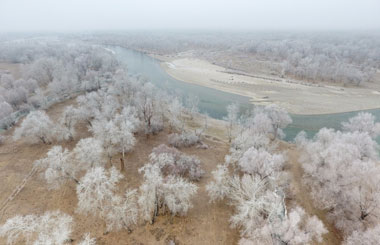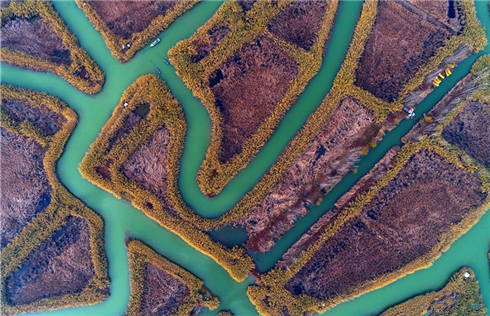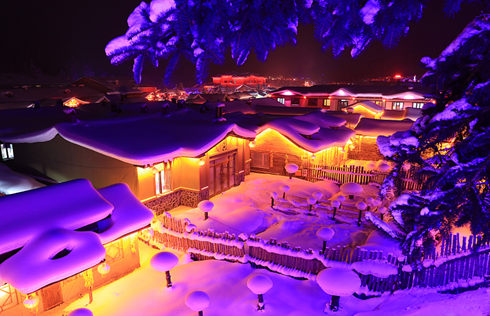Exceptional and ethereal


An especially striking specimen from the period immediately following the reconstruction is a 10.8-meter octagonal rotating sutra bookshelf that's 7 meters in diameter. It's the oldest and largest of a handful that remains and offers insight into Song technology.
A 1,000-year-old 7.4-meter-tall Buddha carved from a single tree is unique in that it's exceptionally slender and stands rather than sits.
Another celebrated sculpture is unparalleled in that it depicts "China's most beautiful Guanyin" at her "most casual". The Goddess of Mercy reclines whimsically in stark contrast to her otherwise rigid depictions in the only known such rendering in dynastic history.
But there's a potentially unnerving dimension of Guanyin's laidback side - her gaze seems to follow you as you walk. Some consider her wandering eyes playful. Others call them creepy.
Three stacked domes of 1,072 Buddhas - a Ming (1368-1644) emperor's gift to dear old Ma - are celebrated as some of the best bronze work from the era, mostly because of their surfaces' smoothness.
The buildings that house Longxing's rare relics are also exceptional in themselves.
Experts nominate Mahamuni Hall as the apex of ancient Chinese architecture.
The nine stairs - nine is a homonym for longevity in Chinese - exiting the hall containing the 500-year-old two-faced Buddha altar are a millennium old and haven't been restored. They're intact but slick - polished glossy by 1,000 years of ever-trickier tromping. Trees planted at about the time the stairs were carved shade them.
Also, the temple's swooping eves are meant to resemble a lion's claw from a bird's-eye view.
The town in which Longxing was constructed is also unique in that it preserves an architectural timeline of the country's development.
Zhengding is a jumble of buildings from every period following the Sui's founding, including modern constructions. It's the kind of place where a structure finished yesterday could exist beside one constructed 1,600 years ago and be surrounded by edifices raised in various centuries between.
The town's development was largely propelled by its prominence as a stopover for emperors' pilgrimages, especially in the Qing Dynasty (1644-1911). Many rulers, including Qing emperor Kangxi (1654-1722), left their mark and chiseled the town's legacy in stone with their inscribed calligraphic works.
While these writings contributed to Zhengding's acclaim, Zhengding's acclaim contributed to writing, as such seminal authors as Lu Xun penned its praises.
History has left behind a mishmash of artifacts from figurines to cannonballs.
Many Ming Dynasty (1368-1644) walls survive, having weathered offensives during the War of Resistance against Japanese Aggression (1937-45) and other assaults.
Nature dissolved some of Longxing's buildings during the Republic of China (1912-49).
Several town walls were refurbished by replacing the insides to ensure structural integrity, while leaving the original exteriors. Bricks were confiscated to build houses during the "cultural revolution" (1966-76).
Homeowners later returned many of these, and they were often restored in their original locations.
An exceptional number of Zhengding's Song era-statues, murals and steles survived tumults.
The west and north gates are the oldest. Zhengding's main gate bifurcates into one stairway and horse-path that has been restored and another that crumbles in its original state.
Four Tang Dynasty (AD 618-907) stupas still tower above the ancient town.
They're equated to the legendary Four Beauties.
















